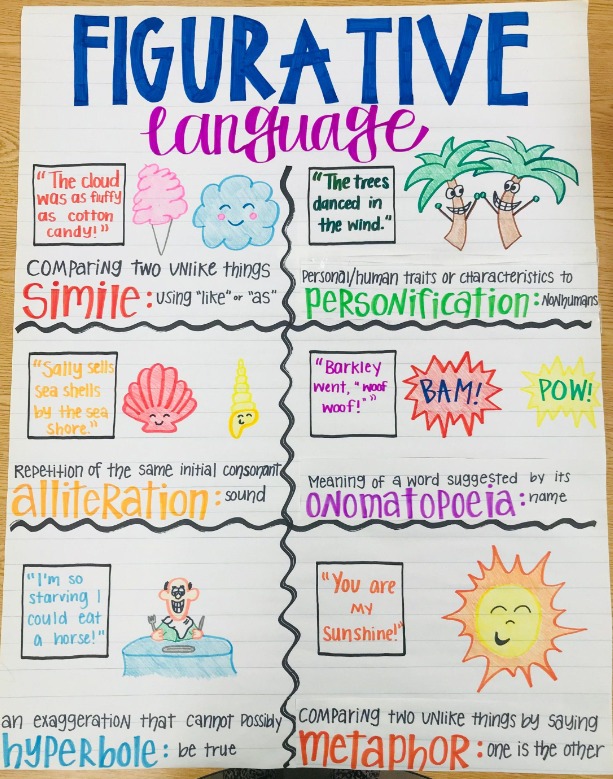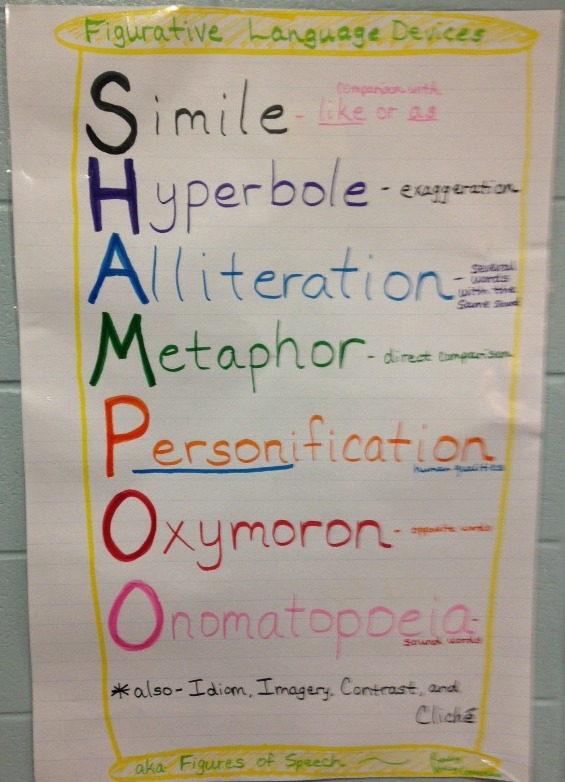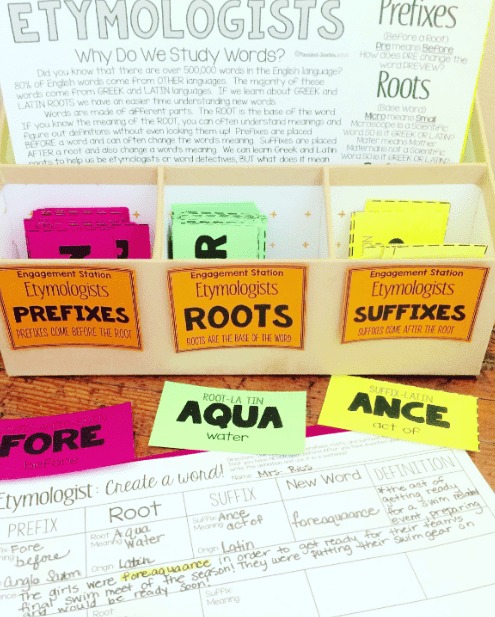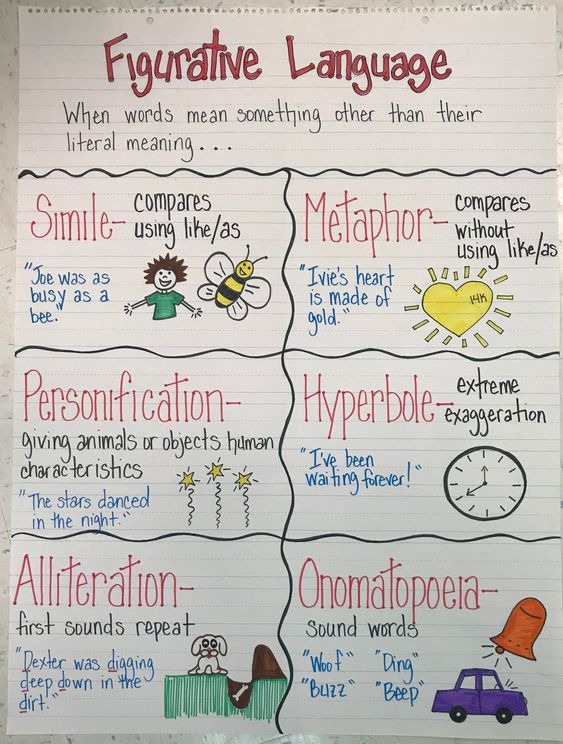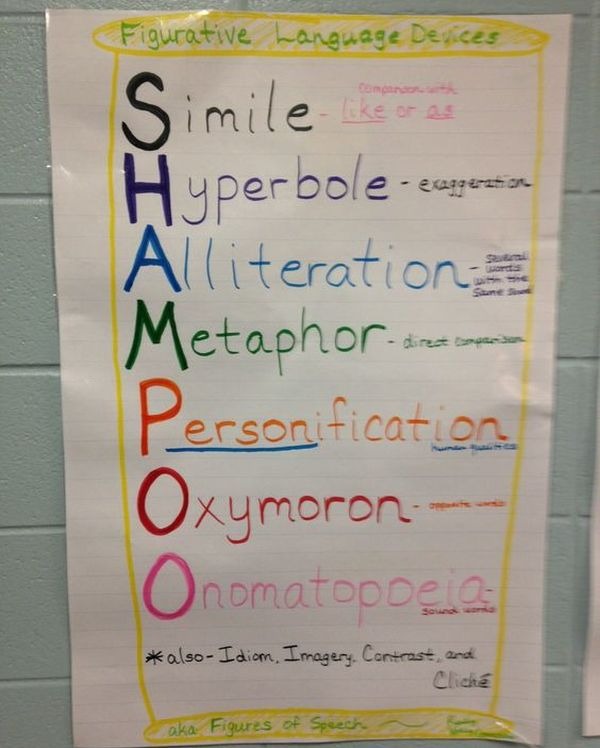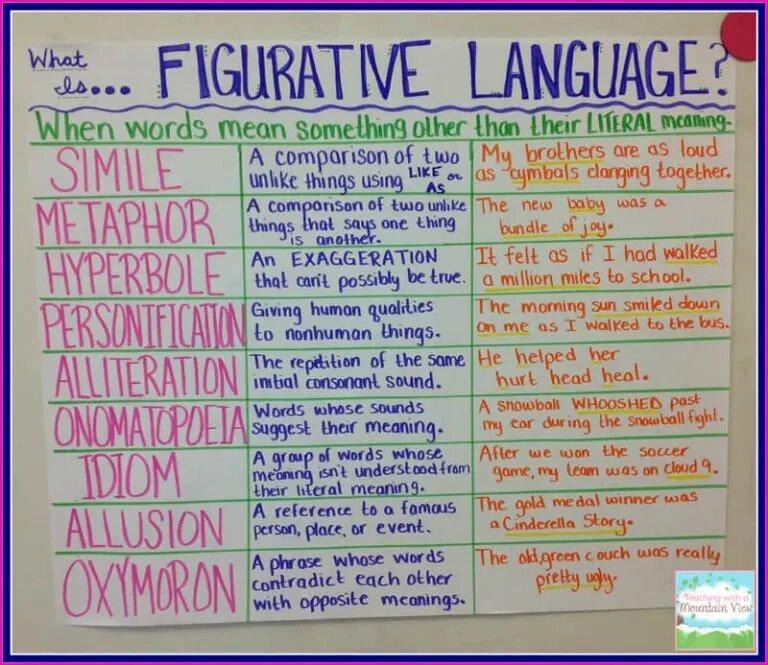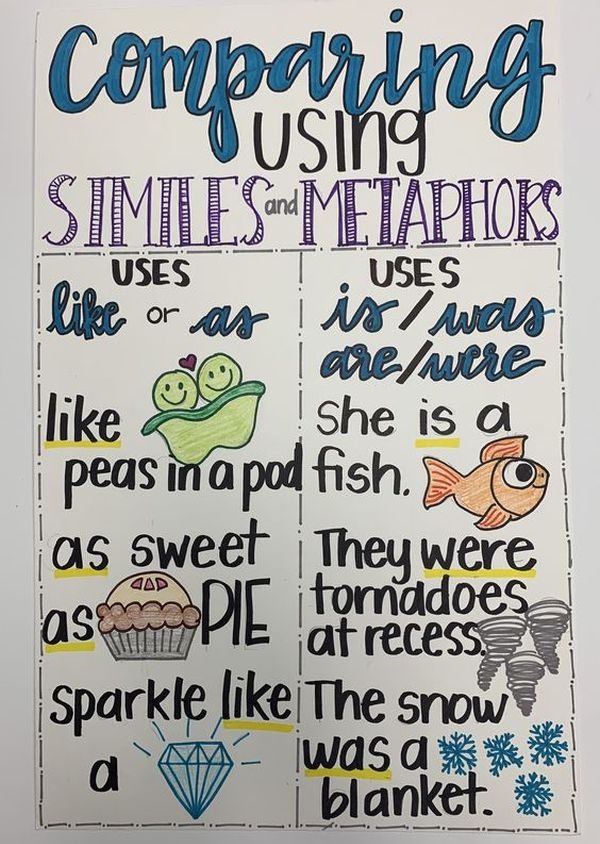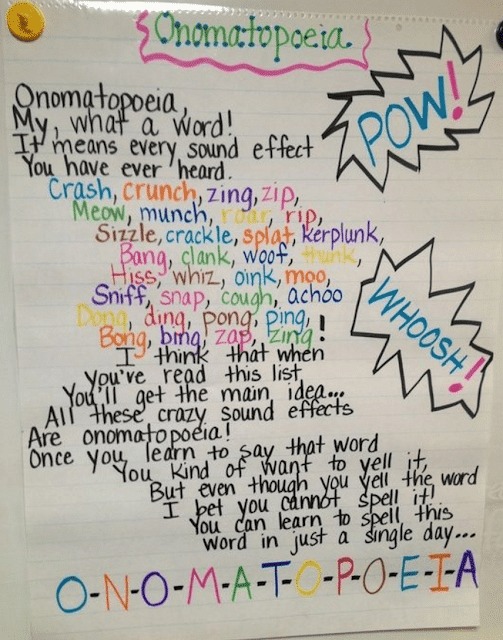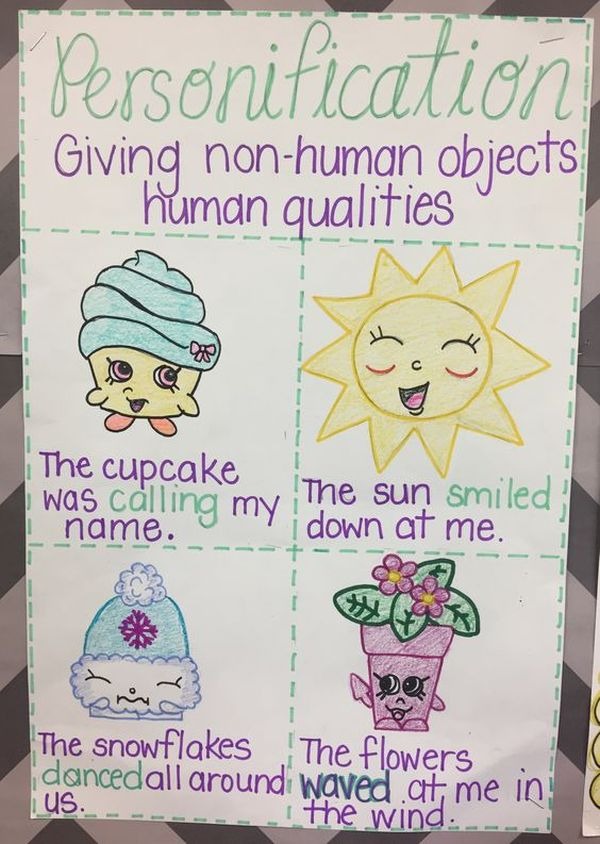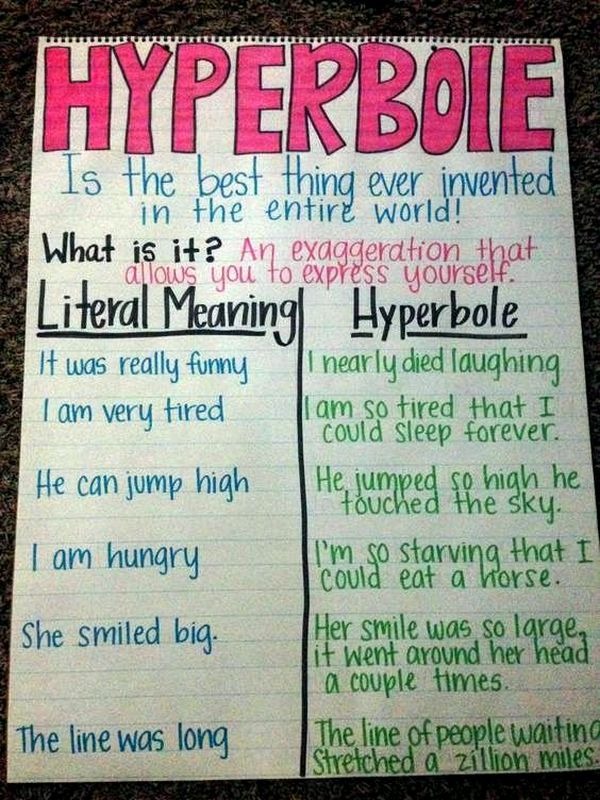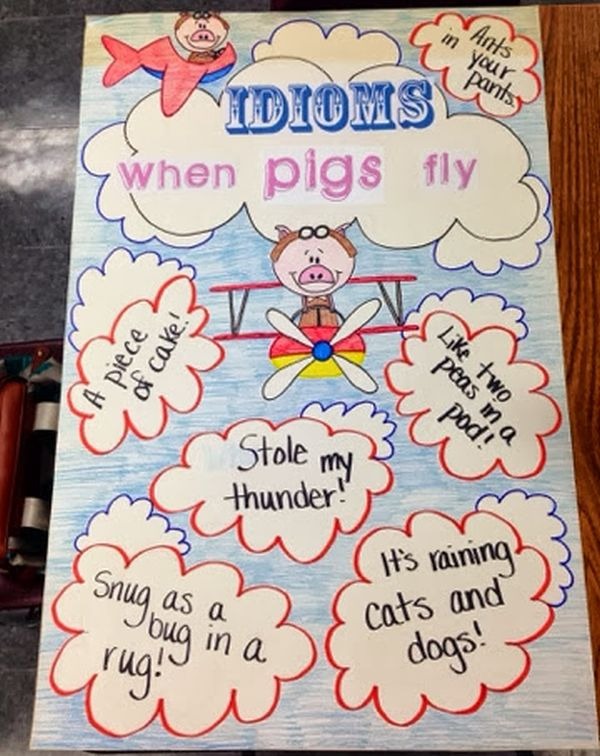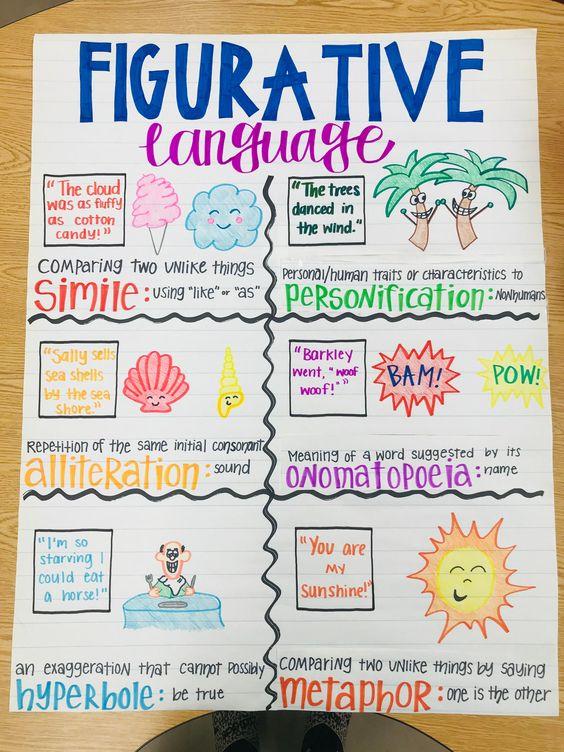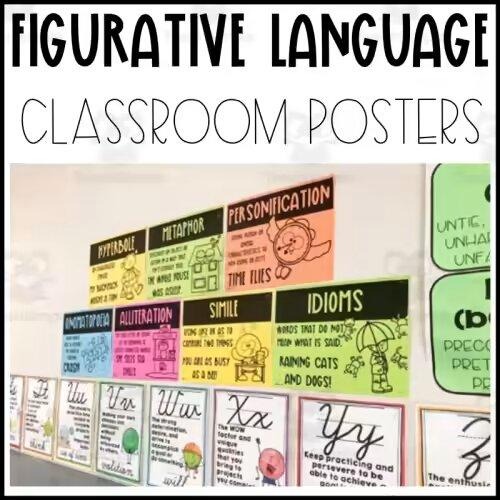Learning figurative language and finding deeper meanings behind words can be tricky, but it’s super fun for students and teachers. Still, children can easily get lost between different types of figurative language. Let’s be honest—why is metonymy even a thing?
An anchor chart can help you keep your students grounded and focused on the topic at hand. We’ll show you how a figurative language anchor chart can help your students avoid getting lost in the nuances between different figures of speech.
What Is a Figurative Language Anchor Chart?
Being introduced to figurative language is the first major step in reading comprehension. Sure, spotting story elements, character traits, metaphors, and themes develops comprehension, but figurative language is what makes literature different from any old scrabbling.
The subject can quickly get confusing, and a figurative language anchor chart is there to help the students grasp the differences between different figures of speech. It also serves as a useful reminder for young students of what they learned in class.
You can use as many types of figurative language anchor charts as there are figures of speech. For instance, you can have:
- Similes anchor chart
- Personification anchor chart
- Hyperbole anchor chart
- Metaphor anchor chart
- Idiom anchor chart
- Allusion anchor chart
- Allegory anchor chart
- Alliteration anchor chart
- Onomatopoeia anchor chart
You can also combine them together and make one large anchor chart that you can hang in your classroom.
One such anchor chart that is popular is the so-called shampoo anchor chart which focuses on:
- S—Simile
- H—Hyperbole
- A—Alliteration
- M—Metaphor
- P—Personification
- O—Oxymoron
- O—Onomatopoeia
What is Literal Language?
Literal language refers to words that convey their exact meaning, without any hidden interpretation or symbolism. In other words, it’s simple and straightforward. When reading literal language, you can take the text at face value.
Examples of literal language:
- The sky is blue.
- She has a big smile on her face.
- The car is parked in the garage.
What is Figurative Language?
On the other hand, figurative language uses metaphors, similes, personification, and other literary devices to convey a more complex or abstract idea. It requires readers to use their imagination and make connections between different concepts.
Examples of figurative language:
- Time flies when you’re having fun (meaning time goes by quickly).
- Her eyes were shining stars (meaning her eyes were bright and beautiful).
- He has a heart of gold (meaning he’s very kind and generous).
Why Understanding the Difference Matters
Recognizing whether a text uses literal or figurative language is essential for accurate interpretation and deeper understanding when reading. Here are some reasons why:
- It helps readers appreciate subtle nuances in meaning.
- It allows them to identify various literary devices used by authors to convey their message.
Elements of a Good Figurative Language Anchor Chart
So, what should you have on a figurative language anchor chart? Well, it depends on the age and cognitive level of your students. But the basic teaching principles are the same.
An introduction to the meaning of figurative language
Here, you would simply illustrate or explain that figurative language is when words mean something different to their literal meaning. You could use an example or two at this stage, which you could unpack in more detail as you go into different types of figurative speech – like “heart of gold” for metaphor or “strong as an ox” for simile.
An explanation of what figures of speech are, using visual cues
To explain simile, metaphor, idioms, personification etc., you need to illustrate exactly what each concept looks like using visual examples. For instance, you might demonstrate the term “happy as a clam” using an illustrated example of a happy child next to a smiley-faced clam to illustrate a simile.
Make Them Interactive
Anchor charts are not about handing out information and making students learn what’s written by heart. You can be creative and make them interactive, with students participating in creating them.
For example, you can combine different elements and create a simile and metaphor anchor chart or a literal and figurative language anchor chart. Then, use sticky notes with examples on them and let students debate which column each sticky note should go to.
You can also get them to match pictures with examples. This way, they can work in teams to figure out what each picture represents.
10 Great Figurative Language Anchor Chart Examples
There is no specific rule for formulating anchor charts. And creativity is encouraged so you can get your message across in an exciting way. So here’s a bit of figurative inspiration to get the creativity flowing.
- Engagement Stations From Panicked Teacher
After teaching students about figurative language, this activity and example is an excellent way for students to practice developing figurative language skills.
- Figurative Language From We Are Teachers
This chart is an excellent reference for students working on complex terms. The examples are particularly illustrative.
- Make An Acronym Acrostic From We Are Teachers
The students can remember seven of the most common figurative languages with this simple chart.
- Definitions And Examples From Classroom Freebies
This clever chart is an excellent reference for students who want to learn difficult words. The examples are particularly illustrative.
- Smiles And Metaphors From We Are Teachers
Here is a simple way to illustrate the difference between the two concepts.
- Onomatopoeia From We Are Teachers
- Personification From We Are Teachers
- Hyperbole From We Are Teachers
- Idioms From We Are Teachers
You can also combine them and make one large anchor chart that you can hang in your classroom.
- Figurative Language From Head Start Anchor Chart
If you are looking for some excellent figurative language anchor charts, look no further.
Ready-to-Use Resources: Anchor Chart PDFs, Digital Boom Cards, Poster Packs
Idioms Anchor Chart By First in Line
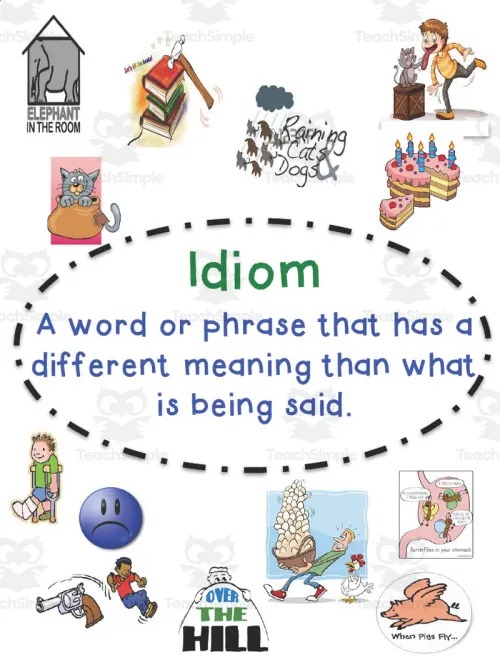
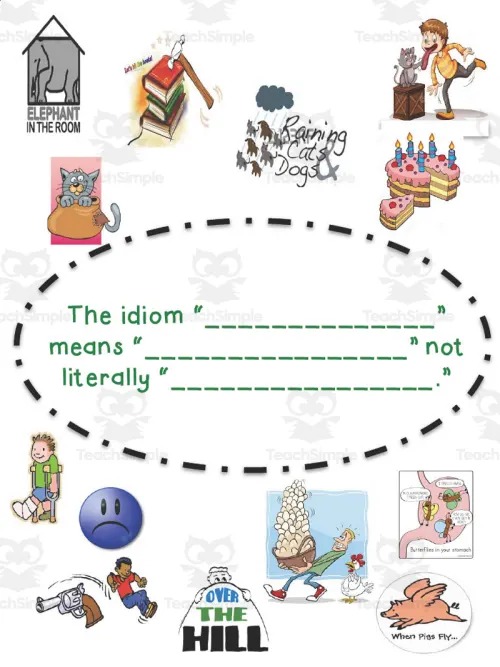

This resource is a set of 4 anchor charts for teaching idioms. The first chart is complete. The following three charts are fill-in-the-blank. These interactive anchor charts would work great for a bulletin board display or inserted into students’ interactive reading notebooks.
Figurative Language Posters By Hillary’s Teaching Adventures
These posters will brighten your room and help your students remember figurative language. I keep these up all year, and the students love them!
FREE Figurative Language Practice Activity By It’s Lit Teaching

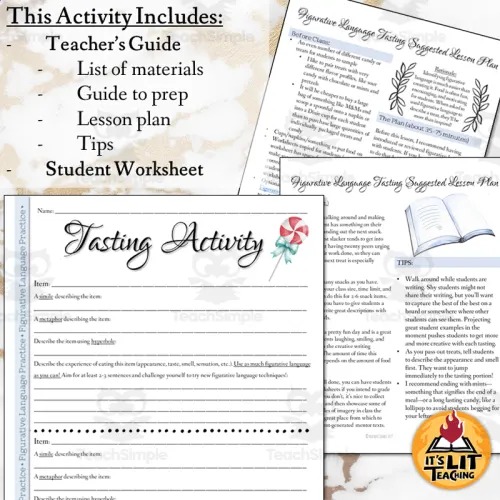
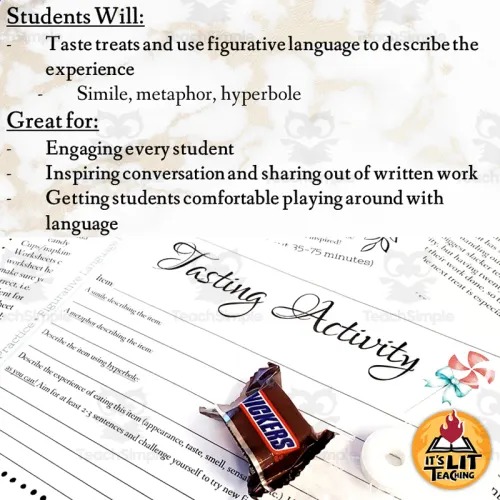
Engage students in figurative language practice with this FREE Figurative Language Tasting Activity! This fun-tasting activity will have even the most disengaged students writing similes, metaphors, and hyperbole as they practice using figurative language in descriptive writing.
Figurative Language Digital Boom Cards By Educate and Create
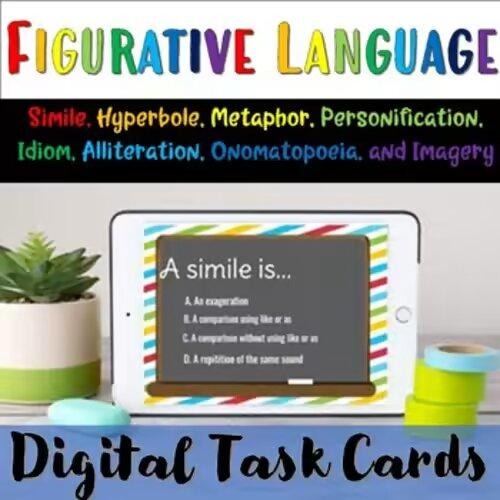
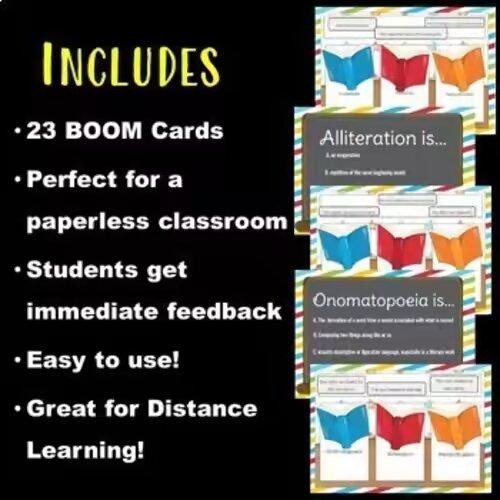
Digital Task Cards are a great way to help your students practice using figurative language! These cards can work on a computer or mobile device!
Scary Similes and Metaphors By The Simplistic Teacher
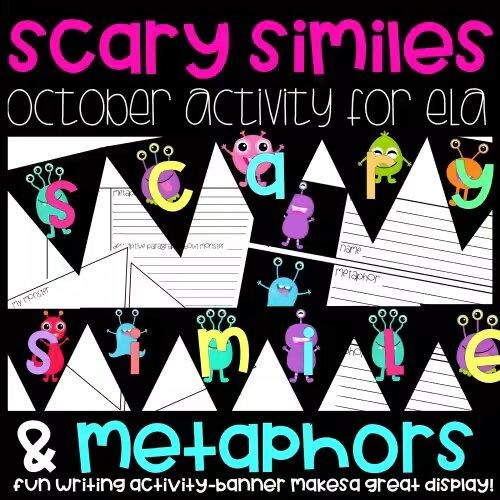
Needing something fun and interactive while incorporating similes and figurative language practice in students’ writing? Then look no further than this adorable monster display where students make up their own monsters and write similes and metaphors to go along with them.
Figurative Language Poster Pack By Brook Creaser
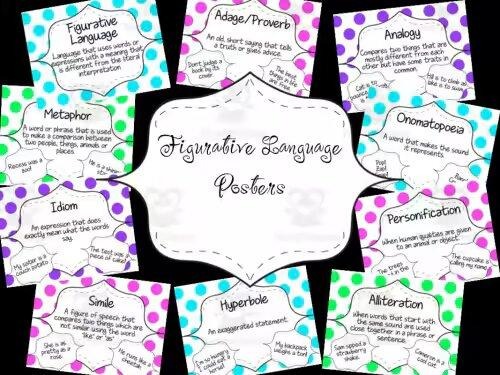
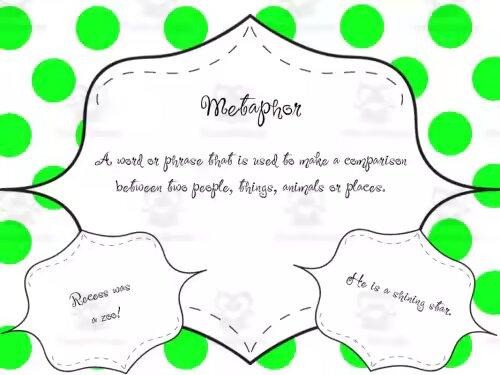
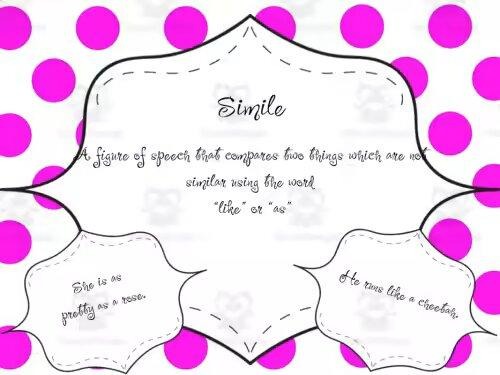
These editable figurative language Posters will be a great addition to your language arts classroom.
Creating and Presenting Effective Figurative Language Anchor Charts
Choose the Right Chart Type
When creating a figurative language anchor chart, it’s essential to select the appropriate type of chart that will best display the information. Some of most common types of figurative language charts include:
- Venn diagrams
- Flowcharts
- Mind maps
- Pie charts
- Bar graphs
Consider the information you want to present and choose a chart type that will effectively convey your message.
Make it Visually Appealing
An eye-catching anchor chart is more likely to engage students and help them retain information. Consider these elements when designing your figurative language anchor chart for example:
- Use colors strategically: Stick to 2-3 main colors for consistency, but don’t be afraid to use bold accents for emphasis.
- Incorporate images: Visuals can help students understand abstract concepts in figurative language.
- Keep text clear and concise: Use simple words and vocabulary, short sentences, and avoid cluttering the chart with too much text.
Utilize Classroom Decor
Incorporate your figurative language anchor charts into your classroom decor by displaying them on bulletin boards or walls. This not only adds visual interest to your room but also ensures that students have easy access to reference materials during lessons.
Some bulletin board ideas for displaying anchor charts include:
- Thematic displays: Group related anchor charts together, such as similes, metaphors, personification, etc.
- Interactive boards: Encourage students to add their own examples of figurative language using sticky notes or index cards.
- Rotating displays: Change out anchor charts periodically based on current units or lessons.
Figurative Language and ELA Anchor Charts Integration
Using charts to teach language arts like figurative language makes learning more engaging and understandable to kids. They also enhance students’ language skills.
We can use these charts with lessons to teach them about cultural idioms. A chart displaying idioms from various cultures can help students understand these phrases and learn about different languages.
Another way is to use a simile and metaphor chart during poetry lessons. This can show students how these tools can express complex ideas and emotions. They might even use them in their own writing.
A chart about personification can be used with a lesson about creating characters in stories. This can help students learn how writers use personification to create interesting characters and make their stories feel real.
More Ready-Made Figurative Language Anchor Charts
If you want to enrich your lessons and give students a helping hand, incorporate figurative language anchor charts in your classes. You don’t have to spend hours creating one on your own—join Teach Simple and get them with ease. With our teacher-made figurative language anchor charts and other materials, you can rest assured you’re getting high-quality products for all your teaching needs.
- Poetry Writing | Anchor Charts and Visuals
- Figurative Language Mini Book | Reading Skill Review
- Shades of Meaning Lesson and Worksheet
- The Open Window: Full Lesson Plan With PowerPoints & Graphic Organizers
- Lamplighter Novel Study Gr. 3–6
- Crispin: The Cross of Lead—Literature Kit Gr. 7–8
- Each Little Bird That Sings: A Literature Guide
- The Interlopers: Full Lesson Plan With PowerPoints & Graphic Organizers
- To Da-duh, in Memoriam: Full Lesson Plan With PowerPoints & Graphic Organizers
- The Emperor’s New Clothes: Full Lesson Plan With PowerPoints & Graphic Organizers
- The Tell-Tale Heart: Full Lesson Plan With PowerPoints & Graphic Organizers
- Little Red Riding Hood Gr. K–3
- Anchor Charts Professional Development
- The Most Dangerous Game: Full Lesson Plan With PowerPoints & Graphic Organizers
- Comparing Two Texts Anchor Chart
- Characters Anchor Chart

